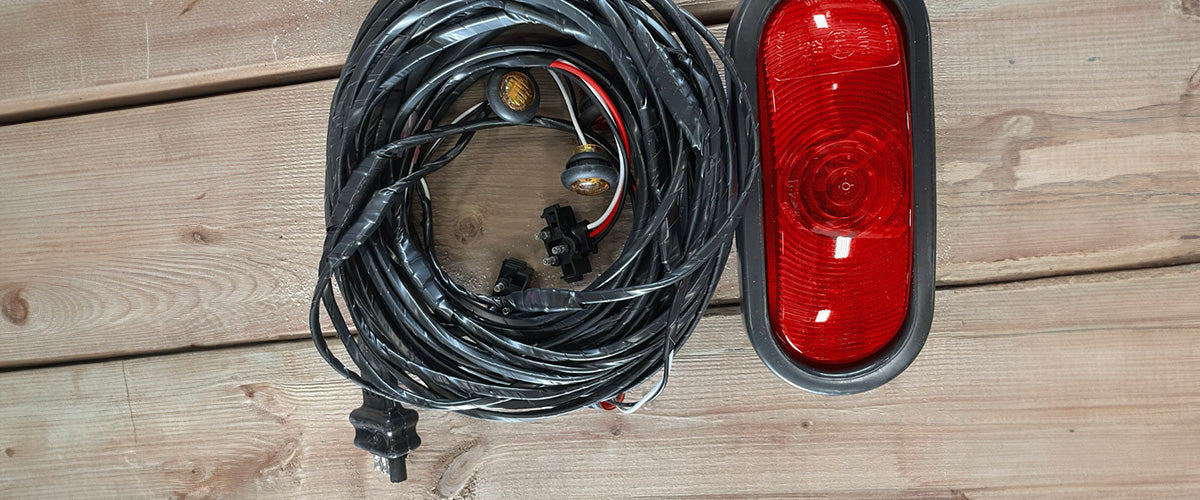TO ENSURE THAT ALL TRAILER LIGHTS ARE OPERATIONAL.
With the trailer connected, switch on the lights and conduct a thorough inspection to confirm the illumination of running lights. Have a helper press the brake pedal and activate the turn signals to verify their proper functioning.
Conduct a detailed examination of the trailer wiring to identify any signs of wear or damage, such as fraying that could lead to a short circuit against the frame.
Additionally, pay attention to the rubber grommet wire access points. If these are damaged or missing, there’s a risk of wires chafing and grounding out. Regular checks of these components contribute to the overall safety and reliability of the trailer’s electrical system.
Here’s a more detailed breakdown of the inspection:
Exterior Lights:
- Check all exterior lights, including:
- Headlights
- Brake lights
- Turn signals
- Reverse lights
- Tail lights
- REFLECTORS:
- Ensure that all reflectors are present and securely attached.
- Verify that reflectors are clean and not obscured by dirt or damage.
-
WIRING:
- Inspect the wiring harness for any signs of wear, damage, or exposed wires.
- Ensure that the wiring is securely fastened and protected from the elements.
- Check for any loose connections or corrosion on terminals.
-
CONNECTORS:
- Examine all electrical connectors for signs of damage or corrosion.
- Ensure that connectors are securely attached and making proper contact.
- If applicable, check the condition of the trailer plug and ensure it matches the towing vehicle’s receptacle.
-
BATTERY:
- If the trailer has a battery, check its condition. Ensure it is securely mounted and that terminals are clean and free from corrosion.
- Test the battery voltage to ensure it is within the recommended range.
-
GROUNDING:
- Verify that the trailer has a proper ground connection. Grounding is essential for the proper functioning of electrical components.
-
CABLE MANAGEMENT:
- Organize and secure cables to prevent them from dragging on the ground or getting caught on other objects.
-
DOCUMENTATION:
- Keep a record of the inspection, noting any issues found and actions taken.
-
SAFETY CONSIDERATIONS:
- Always follow safety guidelines and use appropriate personal protective equipment (PPE) when inspecting the electrical system.
Regular inspections and maintenance of the trailer’s electrical system are essential for safe and trouble-free operation. If any issues are identified during the inspection, they should be addressed promptly to prevent potential safety hazards and ensure compliance with regulations.

